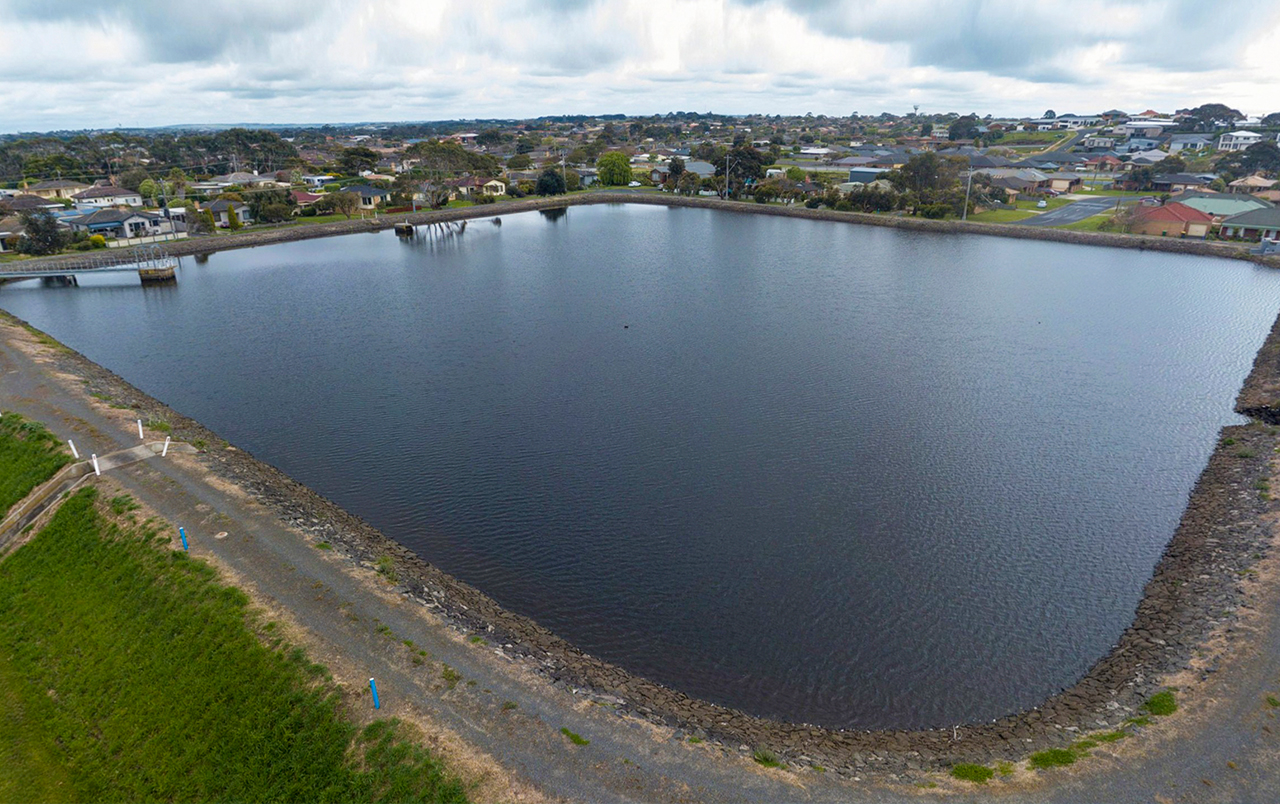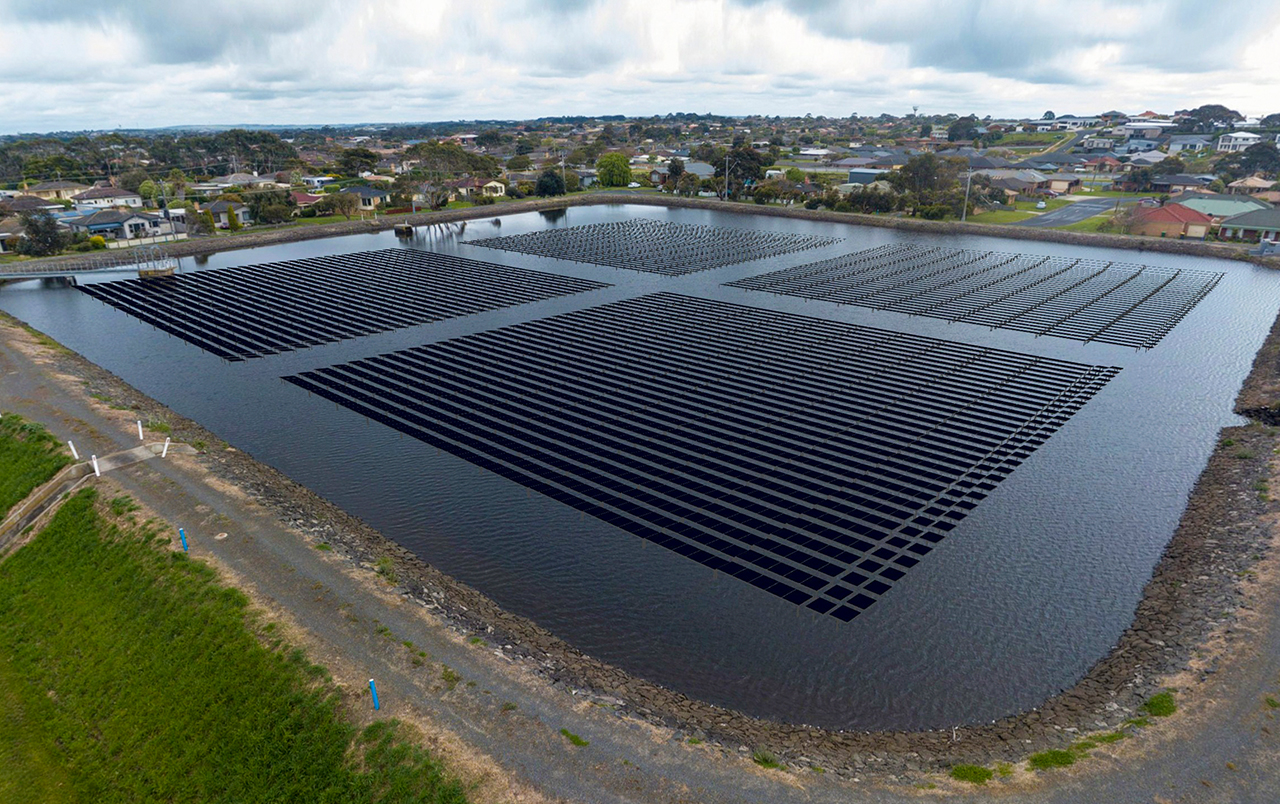Brierly Basin floating solar array
Warrnambool’s Brierly Basin will soon host Australia’s largest floating solar array as part of our plan to reduce carbon emissions to net zero by 2030.


The issue
We are the state’s second largest water corporation by area so the costs of pumping and treating water is significant. Brierly Basin uses a large amount of electricity as water is pumped to the Warrnambool Water Treatment Plant.
We’re working to lower those costs to provide better outcomes for our customers and for our environment. We’ve pledged to achieve net-zero carbon emissions by 2030.
The detail
Brierly Basin stores raw water that is pumped in from the Otways, it also stores water that we harvest from our award-winning roofwater harvesting scheme including the roofs of houses in north-east Warrnambool, industrial sheds to the east, Albert Park sporting facilities and Warrnambool College.
The water in the basin is pumped up to our Warrnambool Water Treatment Plant where it is disinfected and supplied to customers across the city and to Allansford and Koroit. This uses a lot of energy, making floating solar an alternative and efficient solution because of the large area of open water available.
The solar panels we’re installing are designed to harvest light from both sides, increasing the system’s efficiency and making them easier to maintain.
Benefits
The project will generate more than 600,000 kWh/year of renewable electricity and reduce our greenhouse gas emissions by more than 600 tonnes per year.




